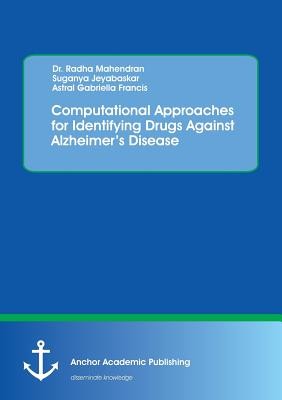
- We will send in 10–14 business days.
- Author: Radha Mahendran
- Publisher: Anchor Academic Publishing
- ISBN-10: 3960671385
- ISBN-13: 9783960671381
- Format: 14.8 x 21 x 0.4 cm, softcover
- Language: English
- SAVE -10% with code: EXTRA
Computational Approaches for Identifying Drugs Against Alzheimer's Disease (e-book) (used book) | bookbook.eu
Reviews
Description
Alzheimer's disease is the most common form of dementia which is incurable. Although some kinds of memory loss are normal during aging, these are not severe enough to interfere with the level of function. Ã-Secretase is an important protease in the pathogenesis of Alzheimer's disease. Some statine-based peptidomimetics show inhibitory activities to the Ã-secretase. To explore the inhibitory mechanism, molecular docking and three-dimensional quantitative structure-activity relationship (3D-QSAR) studies on these analogues were performed. Quantitative structure-activity relationship (QSAR) modeling pertains to the construction of predictive models of biological activities as a function of structural and molecular information of a compound library. The concept of QSAR has typically been used for drug discovery and development and has gained wide applicability for correlating molecular information with not only biological activities but also with other physicochemical properties, which has therefore been termed quantitative structure-property relationship (QSPR). In this study, 3D QSAR and pharmacophore mapping studies were carried out using Accelrys Discovery Studio 2.1. The best nine drugs were selected from the 16 ligands and pharmacophore features were generated.
EXTRA 10 % discount with code: EXTRA
The promotion ends in 21d.00:57:56
The discount code is valid when purchasing from 10 €. Discounts do not stack.
- Author: Radha Mahendran
- Publisher: Anchor Academic Publishing
- ISBN-10: 3960671385
- ISBN-13: 9783960671381
- Format: 14.8 x 21 x 0.4 cm, softcover
- Language: English English
Alzheimer's disease is the most common form of dementia which is incurable. Although some kinds of memory loss are normal during aging, these are not severe enough to interfere with the level of function. Ã-Secretase is an important protease in the pathogenesis of Alzheimer's disease. Some statine-based peptidomimetics show inhibitory activities to the Ã-secretase. To explore the inhibitory mechanism, molecular docking and three-dimensional quantitative structure-activity relationship (3D-QSAR) studies on these analogues were performed. Quantitative structure-activity relationship (QSAR) modeling pertains to the construction of predictive models of biological activities as a function of structural and molecular information of a compound library. The concept of QSAR has typically been used for drug discovery and development and has gained wide applicability for correlating molecular information with not only biological activities but also with other physicochemical properties, which has therefore been termed quantitative structure-property relationship (QSPR). In this study, 3D QSAR and pharmacophore mapping studies were carried out using Accelrys Discovery Studio 2.1. The best nine drugs were selected from the 16 ligands and pharmacophore features were generated.


Reviews